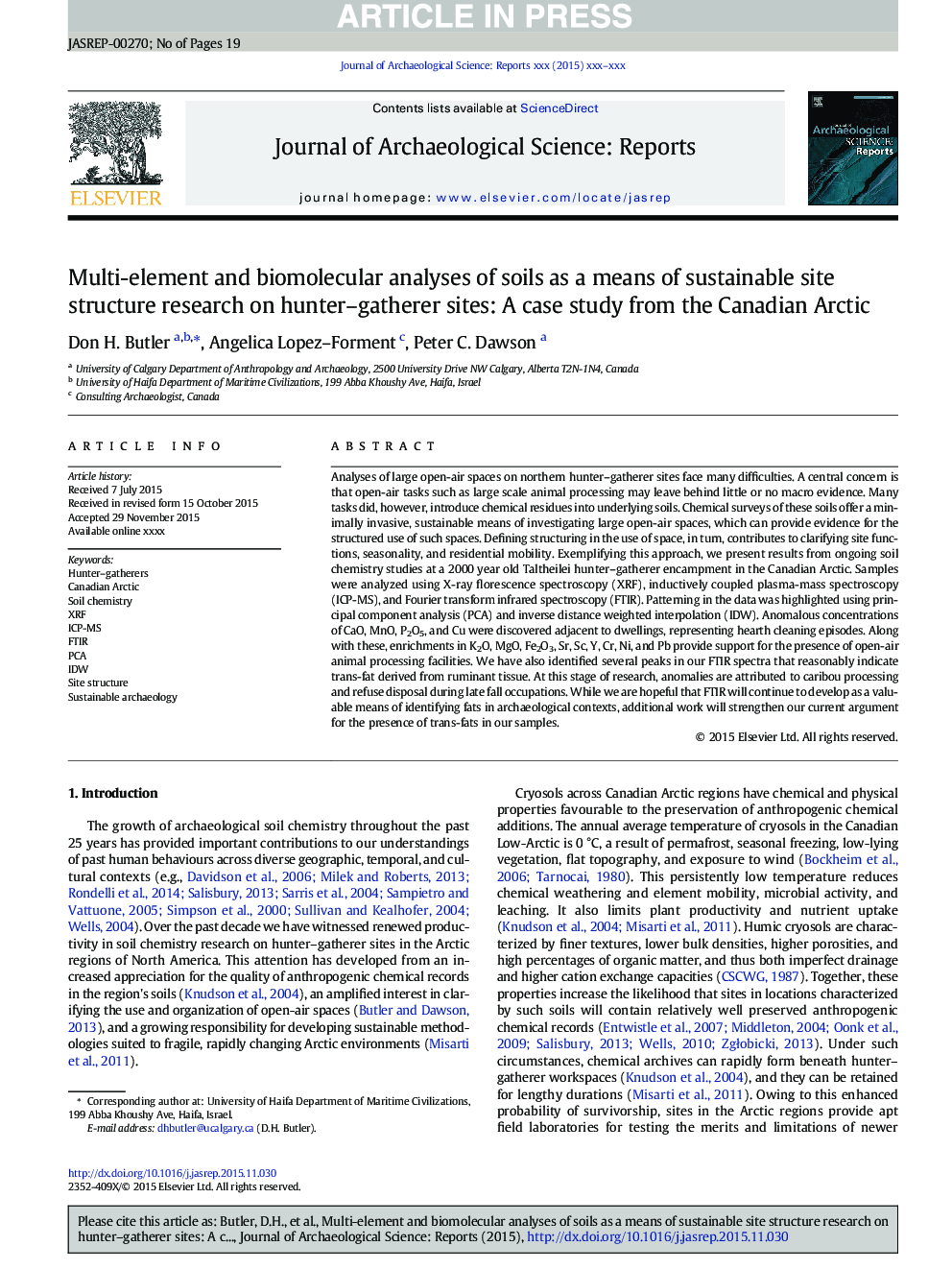| Article ID | Journal | Published Year | Pages | File Type |
|---|---|---|---|---|
| 7444962 | Journal of Archaeological Science: Reports | 2018 | 19 Pages |
Abstract
Analyses of large open-air spaces on northern hunter-gatherer sites face many difficulties. A central concern is that open-air tasks such as large scale animal processing may leave behind little or no macro evidence. Many tasks did, however, introduce chemical residues into underlying soils. Chemical surveys of these soils offer a minimally invasive, sustainable means of investigating large open-air spaces, which can provide evidence for the structured use of such spaces. Defining structuring in the use of space, in turn, contributes to clarifying site functions, seasonality, and residential mobility. Exemplifying this approach, we present results from ongoing soil chemistry studies at a 2000Â year old Taltheilei hunter-gatherer encampment in the Canadian Arctic. Samples were analyzed using X-ray florescence spectroscopy (XRF), inductively coupled plasma-mass spectroscopy (ICP-MS), and Fourier transform infrared spectroscopy (FTIR). Patterning in the data was highlighted using principal component analysis (PCA) and inverse distance weighted interpolation (IDW). Anomalous concentrations of CaO, MnO, P2O5, and Cu were discovered adjacent to dwellings, representing hearth cleaning episodes. Along with these, enrichments in K2O, MgO, Fe2O3, Sr, Sc, Y, Cr, Ni, and Pb provide support for the presence of open-air animal processing facilities. We have also identified several peaks in our FTIR spectra that reasonably indicate trans-fat derived from ruminant tissue. At this stage of research, anomalies are attributed to caribou processing and refuse disposal during late fall occupations. While we are hopeful that FTIR will continue to develop as a valuable means of identifying fats in archaeological contexts, additional work will strengthen our current argument for the presence of trans-fats in our samples.
Related Topics
Social Sciences and Humanities
Arts and Humanities
History
Authors
Don H. Butler, Angelica Lopez-Forment, Peter C. Dawson,
